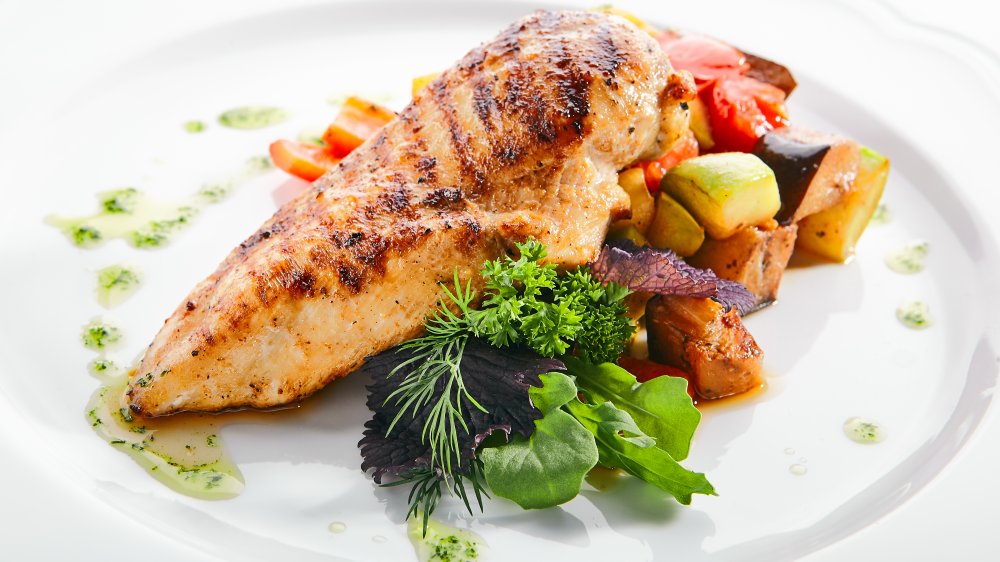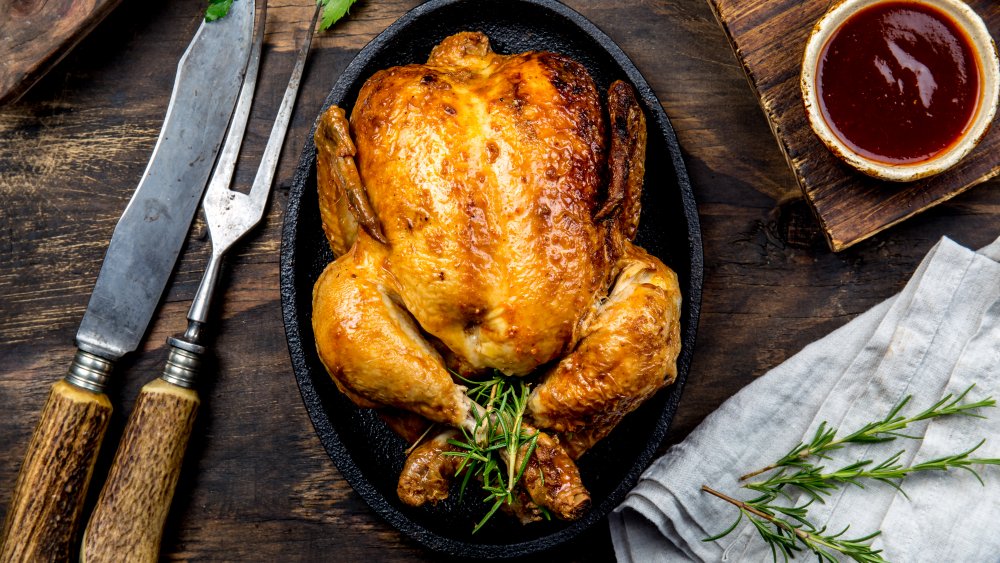Why Chicken Tastes Different When It's Reheated
No matter how succulent and delicious your dish was the evening before, reheating chicken can often result in a deterioration of both flavor and texture. As long as you reheat the chicken properly, there's no safety issue with eating it, and it's a purely taste-related problem (via Delishably).
This phenomenon has been termed "warmed-over flavor" and can be described as lending a cardboard-esque texture as well as a "stale, faintly rancid" flavor to chicken that has been reheated (via Serious Eats). According to food scientists and taste testers, this flavor is most likely to strike when the chicken has been refrigerated for at least 24 hours and is subsequently reheated. The reason behind this phenomenon can be attributed to exposure to oxygen, which causes deterioration of the polyunsaturated fatty acids in the chicken. This, in turn, affects the flavor of the meat.
Best ways to avoid warmed-over flavor with chicken
Because chicken has higher amounts of polyunsaturated fatty acids than beef or lamb, it's more susceptible to this warmed-over flavor. Fish is also high in polyunsaturated acids, which can explain why you may have had a similar experience if you've ever reheated fish.
One way to try and avoid this problem is by using a sauce, such as a curry, to act as a barrier to the air. To double down on this, using rosemary and oregano as part of the sauce may be a good move as well, as these are both antioxidants that protect against the oxidation of the polyunsaturated fatty acids.
Another way to avoid this scenario with chicken you've made at home? Your best bet is to avoid reheating it in the microwave and use whatever heat source you used to cook it in the first place. For example, if you roasted it, toss it in the oven, and if you're wanting to reheat fried chicken, you can drop it back in the fryer for a minute or two (via Greatist).

